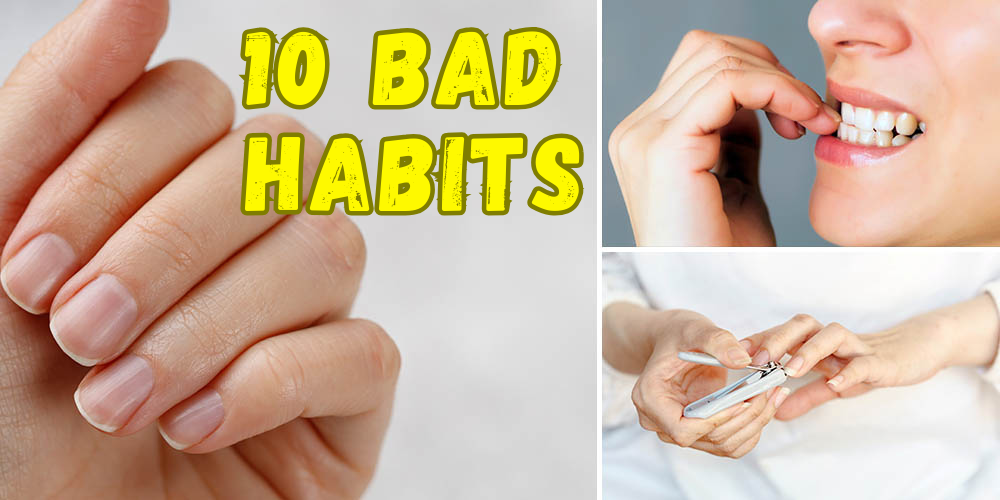
Stop Doing This To Your Nails!
Regular nail trimming is a basic grooming habit everyone must observe. For some people, particularly women, regular manicure and pedicure sessions are a necessary part of their lifestyle.
More than just fashion, nail care is essential in ensuring healthy growth. Our nails may help us monitor our overall health. Some changes in the nail’s appearance, color, shape, and texture may indicate health problems. Nails can aid doctors in forming diagnoses.
But no matter how invested we are in our nails, we may have unhealthy habits towards it. Overgrooming is as damaging as neglecting your fingernails and toenails. Some people may also unconsciously chew nails out of habit and harbor illnesses from doing so.
10 Unhealthy Nail Habits You Should Stop Doing
Routine nail care is a must for cosmetic and hygienic purposes. It may also be the key to avoiding infections and impacting the general health.
But, did you know that some nail care products and techniques we believe will make our nails look beautiful may actually cause more harm?
Here are some terrible nail habits we must stop for healthier and beautifully-looking nails.
Removing cuticles
The dead skin at the base of the nail is there for a reason. It is the seal between the skin and the nail plate to protect the nails from bacteria and infection.
Many of us may guiltily agree to the satisfaction of having the ragged cuticles removed. Nail salons snip cuticles accordingly to prevent hangnails. But in retrospect, hangnails happen because of removing cuticles.
Over time, it will disrupt the natural growth of nails and damage the nail bed.
Nail biting
Nail biting is often observed in children, especially when they are stressed. Some adults also develop the nail-biting compulsion as an annoying habit and coping mechanism. It is medically called onychophagia and is sometimes linked to behavioral and mental problems.
Minor nail-biting issues are not worrisome. However, they may cause trauma to the nails, resulting in ingrown nails, discoloration, and an unsightly appearance.
The nail is also a breeding ground for pathogens from the dirt and bacteria that accumulate under it. More than infecting the nails, nail biting also causes internal infections and makes one susceptible to diseases.
Many research projects proved the prevalence of parasitic infections due to poor hand hygiene and nail biting, particularly in children.
Biting your nails isn’t just an annoying habit—it’s a free pass for parasites, bacteria, and infections to invade your body. Every time you chew, you’re ingesting dirt, germs, and parasite eggs lurking under your nails. These unwanted guests don’t just pass through—they multiply, leading to digestive issues, chronic fatigue, skin breakouts, and even brain fog.
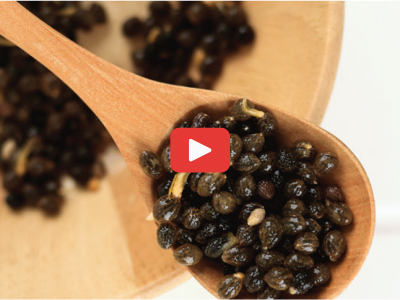 I came across an easy at-home remedy for flushing out parasites—a 3-ingredient recipe using papaya seeds, honey, and water. It was tested in a Journal of Medicinal Foods study where 71.4% of people cleared their system of parasites after taking it.
I came across an easy at-home remedy for flushing out parasites—a 3-ingredient recipe using papaya seeds, honey, and water. It was tested in a Journal of Medicinal Foods study where 71.4% of people cleared their system of parasites after taking it.
Click the image to see the full recipe!
Cutting nails too short
Overgrooming nails by cutting them too short may cause ingrown nails. In some cases, this may irritate the skin and lead to infection. Ingrown nails are discomforting and painful to endure.
Cut your nails straight to avoid it and leave a white tip at the edge. If you accidentally cut your nails too short, soaking it in warm water (best if with Epsom salt) may reduce the discomfort.
Leaving nail polish for too long
After two to three weeks of painting your nails, it is advisable to remove the polish to give it a break. Nail polish is not necessarily bad, but leaving it on for too long tends to dry out the nails.
The white and chalky patches on the surface are keratin granulations when the nails dry out and react to the nail polish.
Gel polish is also harsher than traditional nail polish, particularly during removal. Improper gel polish removal may damage the nail bed and make it brittle. Nail technicians usually soak the gel in acetone instead of peeling or scraping it off.
Not to mention most nail polishes and nail products are made of toxic substances.
Improper filing
Filing the nails excessively and aggressively weakens them and makes them more prone to damage. It may lift the nail from the nailbed and cause it to split.
If this habit continues, your nails will become fragile and susceptible to chipping and damage.
The proper way of filing a nail is using a fine-grit nail file and filing in one direction while applying minimal pressure. File nails only when they are dry because wet nails are softer and prone to splitting. It is also easier to shape a dry nail.
Not using gloves
Not using gloves when handling water, especially warm or hot, causes the nails to shrink. Frequent exposure to water, as well as handling chemicals, increases the likelihood of nail splitting.
Using gloves is an occupational safety standard for work. It is also essential when doing house chores. Don’t skip the gloves when doing laundry, dishes, gardening, cleaning with abrasives, or dealing with dirt to protect your nails from damage.
Using nails as tools
Using your nails as a substitute for a tool is one way of unconsciously mistreating it. Your nail may fit the screw head, but it doesn’t mean it is worth trying. A label remover or knife is better at peeling labels than your bare hands.
Do not try to do and fix things with your fingernails; you may only end up chipping them. But there’s something even worse…
Heavy metals sneak into your body through everyday habits, and your nails are the perfect entry point
If you’ve ever used your nails to scratch off paint, open cans, or mess with metal objects, you’ve likely absorbed traces of lead, mercury, and cadmium—silent toxins that accumulate in your organs over time.
These metals don’t just leave—they build up, causing brain fog, fatigue, and long-term damage. Here’s how this common plant you might have in your kitchen detoxifies your body from heavy metals.
Letting nails grow too long
Beautifully manicured long nails are always to die for. Unfortunately, there is a tradeoff and risk to them. Long nails are at a higher risk of breakage and snagging into objects. They also increase the risk of infections due to the dirt and possible accumulation of microorganisms underneath.
Depending on your line of work, sporting a long nail may get in your way and add to your discomfort.
We all have different preferences when it comes to fingernail length. However, it is necessary to trim toenails regularly to prevent them from thickening and pressing uncomfortably on your shoes.
Using dull nail tools
Sometimes, you make do with whatever tools you have at home to groom your nails — even if it means using blunt clippers or nippers. Dull tools are damaging to the cuticles and nails, making it difficult to achieve a smooth and clean finish. They also increase the risk of ingrown nails.
When doing nails at home, ensure you have the right sharp and properly maintained materials. Sharpen your tools and replace worn-out ones to avoid wearing down your nails.
Eating an improper diet
What you eat significantly impacts your nails, and this impact is not limited to their cosmetic value. So, it is safe to say that you should stop feeding yourself food that can ultimately harm them from within.
Sugary foods, fried and processed foods, caffeine, and alcohol are damaging to health. If you have a poor nutritional intake, it will show on the nails, causing inflammation and discoloration.
For better nail health, try to include nutrient-dense foods in your daily diet, such as leafy greens and fruits. Biotin, calcium, magnesium, protein, and Vitamins A, D, and E are excellent in promoting healthy nails and hair.
Nourishing bone broths is also an excellent way to boost nail health.
Herbal Remedies to Boost Nail Health
Your nails might seem harmless, but they’re a breeding ground for bacteria and fungi—especially if you’ve been dealing with nail damage, biting, or leftover chemicals from nail polish. Fungal infections can creep in unnoticed, leading to discoloration, brittleness, and even deeper skin issues if left unchecked.
There are many powerful herbs that help fight fungal and bacterial infections, but one that I personally trust and have used is Usnea, often called “old man’s beard”. This natural antifungal powerhouse is packed with usnic acid, a compound that breaks down fungal cell walls, stops their spread, and supports the immune system to fight back. Whether it’s preventing infections from nail damage or keeping your hands and feet healthy, a usnea tincture spray is a must-have in your nail care arsenal.
If you want to harvest usnea yourself, do it responsibly—look for fallen branches after storms instead of pulling from living trees, and always check for its stretchy white core to correctly identify it. Since usnea absorbs toxins from its surroundings, only gather from clean, unpolluted areas to ensure it’s safe.
But if you want a ready-made solution that works instantly, this trusted usnea tincture spray is what I personally recommend. After testing multiple suppliers, I finally found one that delivers the highest potency and purity.
👉 Click here to get yours and keep your nails (and body) protected.
Moisturizing Nail Soak Recipe
Soaking and moisturizing nails and cuticles occasionally prevents dryness and cracking. It also makes nails more pliable and reduces the risk of infections.
Getting your nails done through manicures and pedicures provides proper nail cleaning and care. However, it is not always necessary, and simple at-home nail care may be enough.
Nail Soak
 Ingredients
Ingredients
- 1 tbsp baking soda
- 1 tsp jojoba oil
- 3 drops lavender essential oil
- 1 cup warm water
Steps
- Place baking soda, jojoba and lavender in a bowl or nail-soaking bowl if you have it.
- Pour warm water over the mixture.

- Stir to combine.
To Use: Soak hands or toes into the bowl for at least 10 minutes.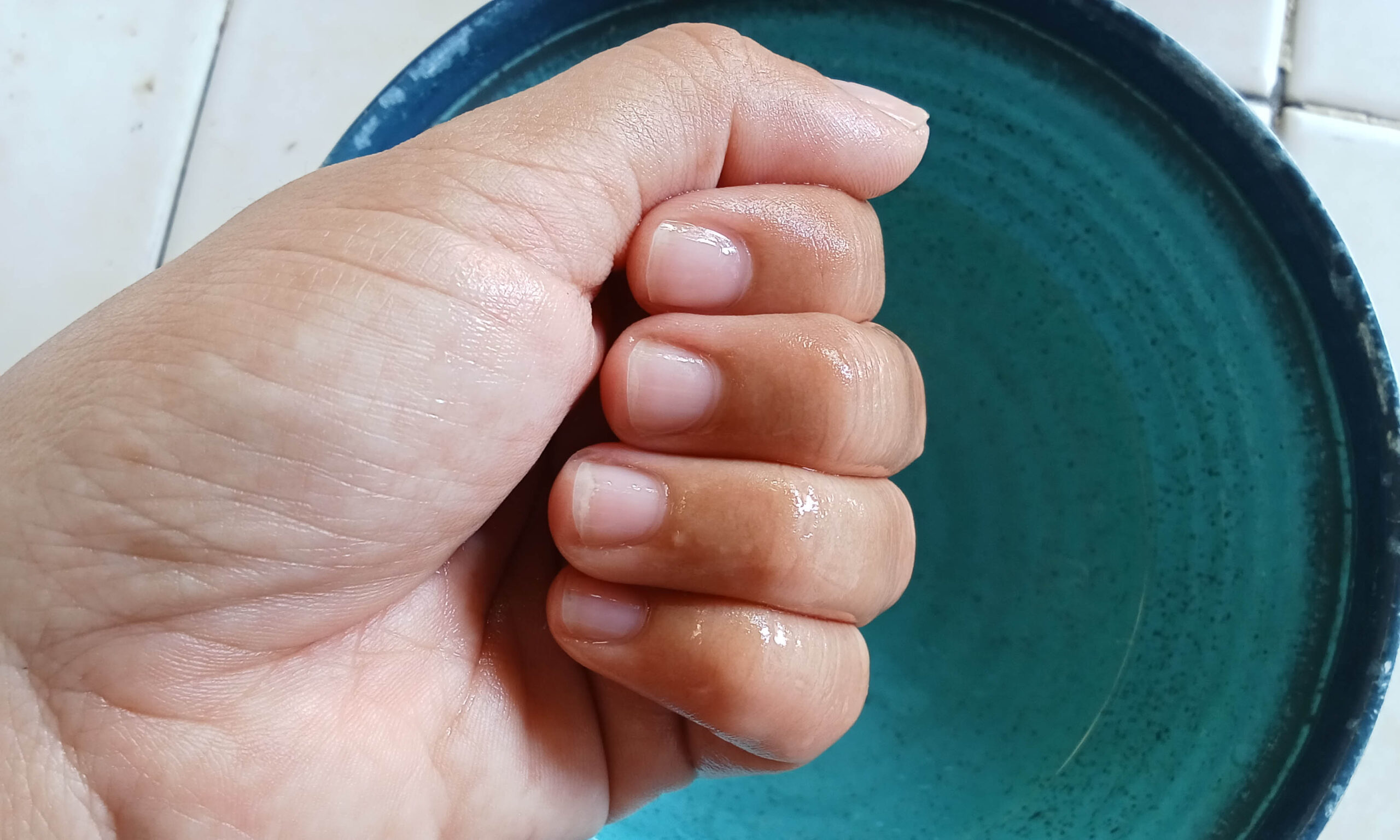
Some people have skin reactions to baking soda. Not sure if worth noting but wanted to put it out there.
You just gave your nails the care they deserve with that soak—now, let’s make sure they stay healthy and protected. Right after a soak, your nails and cuticles are at their softest, which means they’re also more exposed to dryness, cracking, and whatever bacteria might be lurking around.
That’s why I always follow up with a dab of All-Purpose Salve. It’s packed with antibacterial and antifungal herbs that help lock in moisture, calm irritation, and keep your nails from drying out. I just massage a little into my cuticles and let it do its thing.
If you’ve ever dealt with brittle nails, peeling skin, or just want to keep everything looking smooth and healthy, this step makes all the difference. Grab yours here and keep your nails in top shape!
The Last Remedy You’ll Ever Need for Stubborn Infections
Fungal infections aren’t just annoying—they’re persistent. They burrow deep into the skin, thrive in damp conditions, and always seem to return just when you think you’ve gotten rid of them. But after struggling with this myself, I finally found a remedy that actually works.
Inside The Lost Remedies Academy, you’ll discover how to make a powerful Homemade Anti-Fungal Salve that doesn’t just sit on the surface—it penetrates down to the deepest layers of your skin where fungal infections hide. This isn’t a temporary fix. It’s a time-tested, natural solution that people have used for generations to stop infections at the root.
And that’s just the beginning. Inside the Academy, you’ll also learn:
- ✅ The Doxycycline of the Woods – a wild-growing antibiotic alternative
- ✅ The Backyard Plant as Powerful as Morphine – and how to make it yourself
- ✅ How to create Pain-Relieving Herbal Plasters to speed up healing
- ✅ A DIY Herbal Migraine Remedy straight from nature
- ✅ The Fever Sponge – a lost treatment that helps break fevers naturally
And once you finish the course, you’ll even get a physical diploma to showcase your new skills. Imagine impressing your friends and family with remedies they never knew existed. You won’t just know about herbal medicine—you’ll be the go-to healer in your circle.
Why let infections linger or waste money on treatments that don’t work? Learn the lost healing skills that can keep you and your family healthy for a lifetime.
👉 Click here to secure your spot in The Lost Remedies Academy before it’s full!






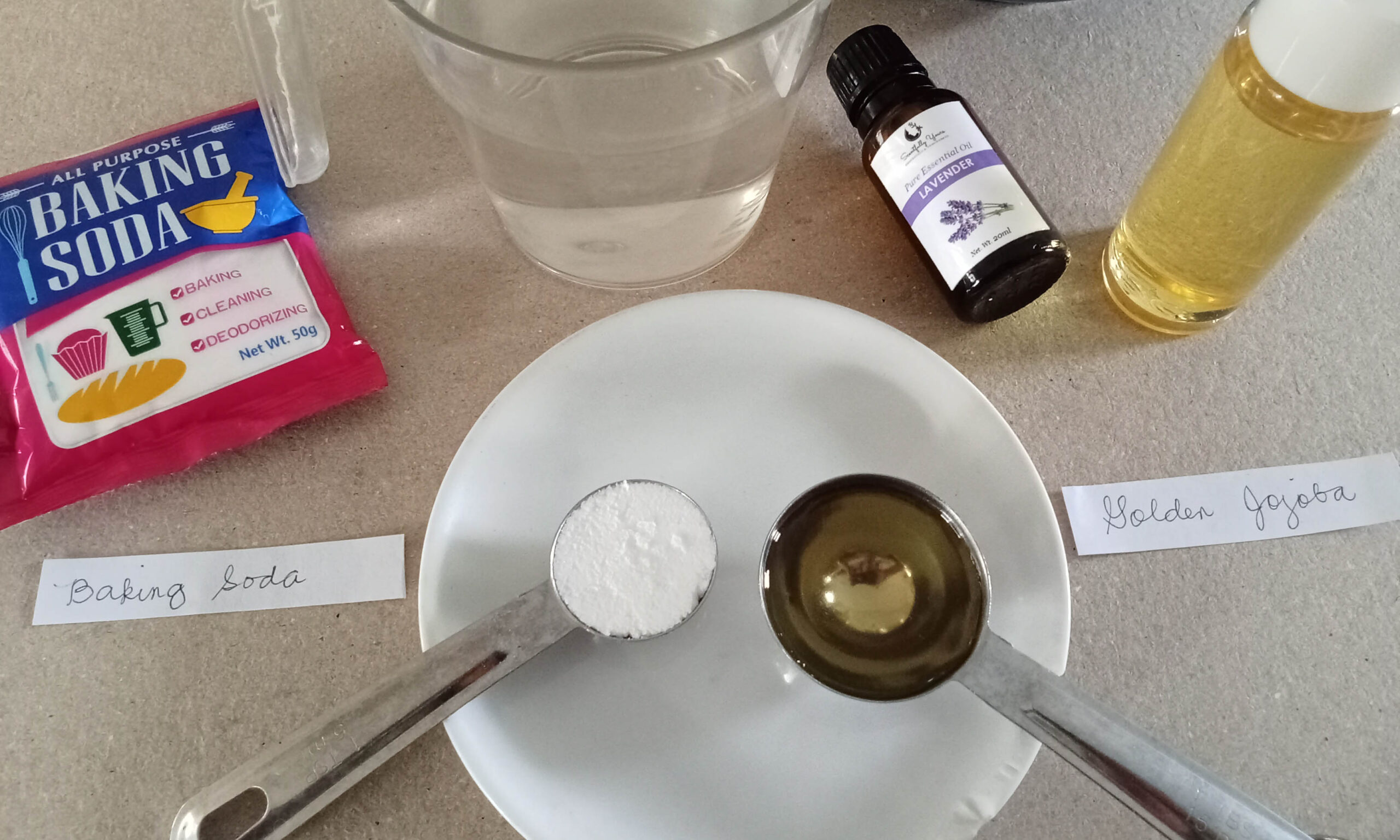 Ingredients
Ingredients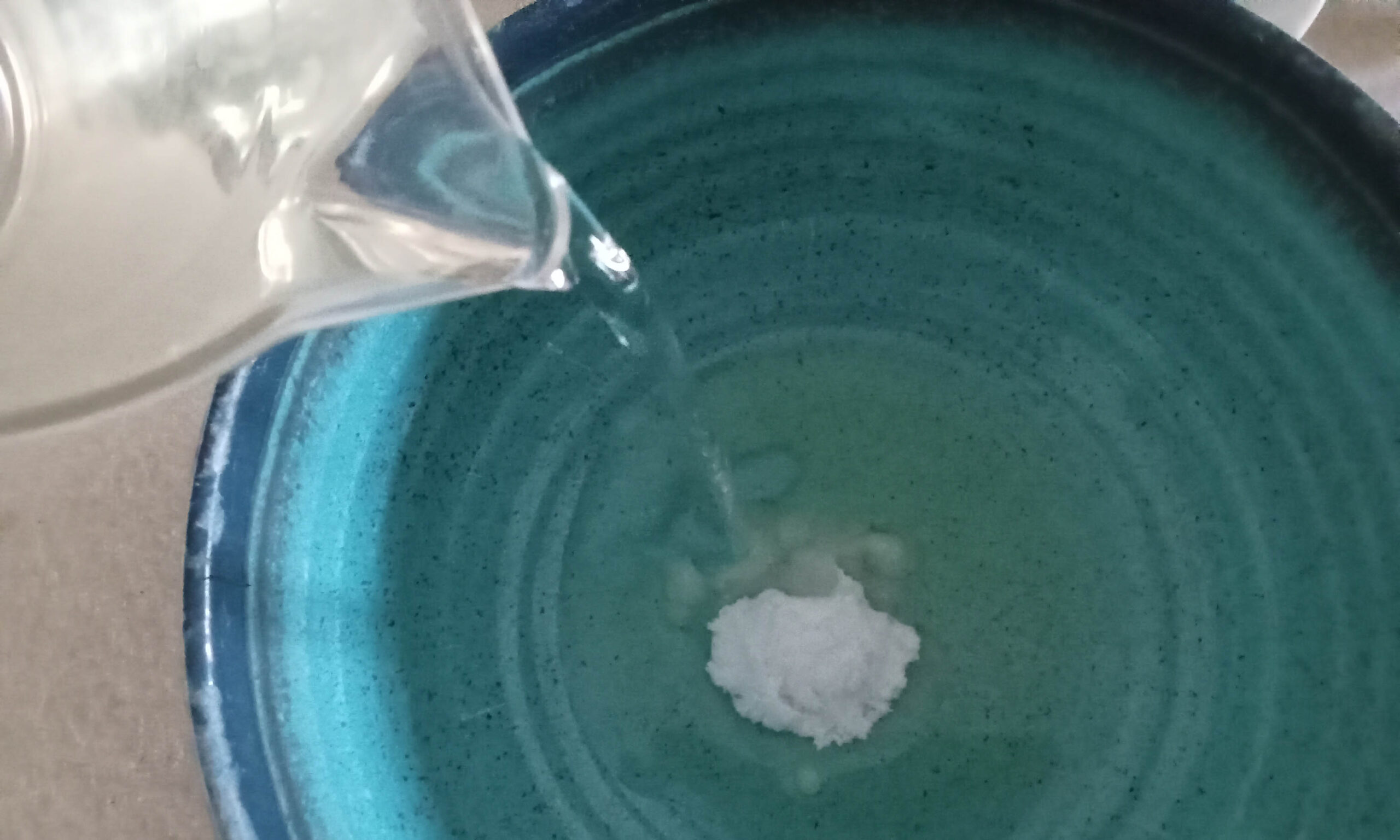
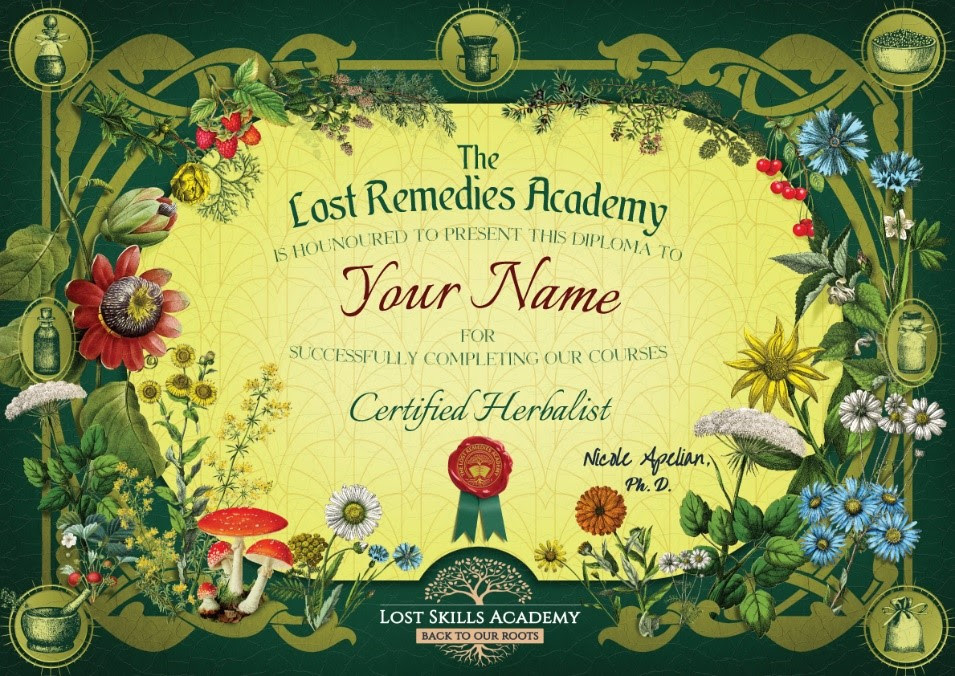
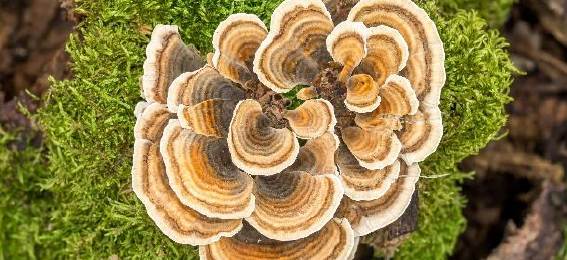
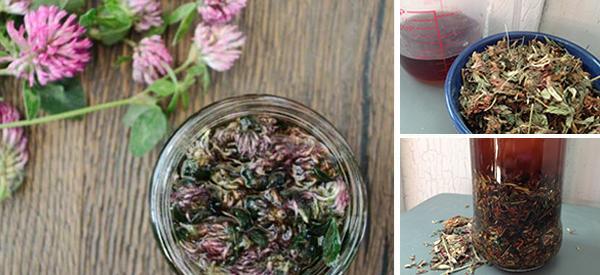
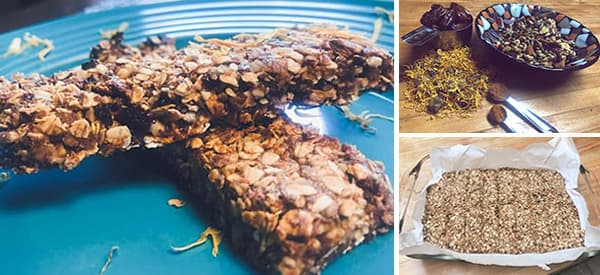
“More than infecting the nails, nail biting also causes internal infections and makes one susceptible to diseases.”
I’ve bit my nails all my life and feel it’s the reason my immune system is still so strong. lol
Thank you for the recipe.
Me too i generally only get sick when i eat a whole bag of sugary lollies or spend all day out in the sun on the hottest summer days and im always dealing with sick and injured animals and the garden and yet when i think about what would be on my nails that thought should make any one sick .that said i do cleanse my hands thoroughly for food